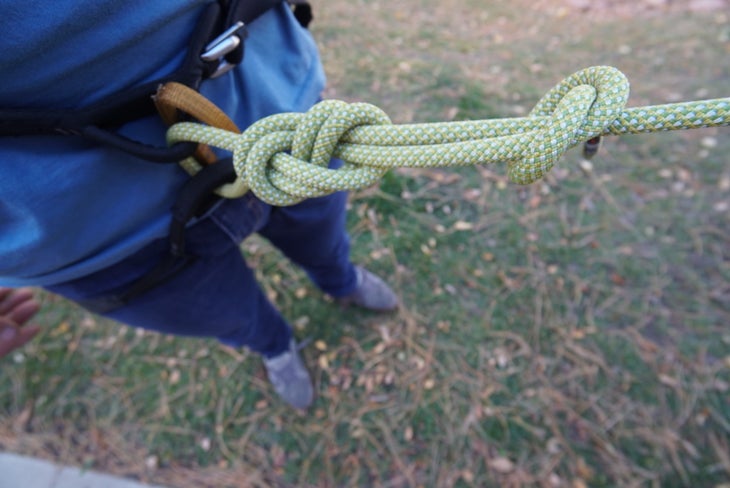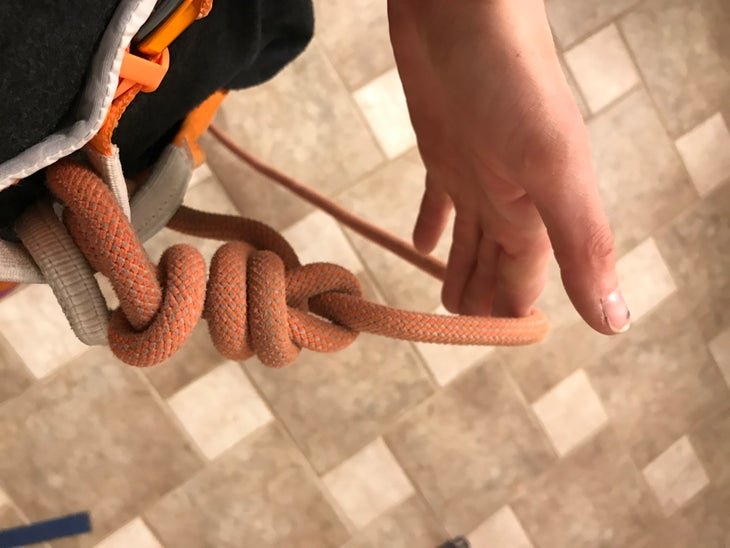Tie Double Bowline Knot
What's the Best Tie-in Knot? The Bowline vs. The Figure 8 Knot
Pro climber Heather Weidner discusses the pros and cons of two tie-in knots.
Join Climbing
Create a personalized feed and bookmark your favorites.
Join for free
Already have an account?
Sign In
Join Climbing
Create a personalized feed and bookmark your favorites.
Join for free
Already have an account?
Sign In
Get access to everything we publish when you sign up for Outside+.
There are two basic tie-in knots climbers should be familiar with: The figure-8 follow-through and the double bowline with a back-up. Heather Weidner, pro climber, explains the pros and cons of both knots to help you decide which is the one for you.
Note: The figure eight knot is recommended for all novice and intermediate climbers. The double bowline should only be considered by advanced climbers with strong technical skills as it is easier to tie incorrectly and more difficult to inspect.
Figure Eight

Pros
This knot is the gold standard in climbing, and everyone who's ever led (or even seconded) a pitch will know how to tie it. It's easy to teach and it's easy to safety check. This knot is also more secure than the bowline with new, stiff, or slick ropes and in situations where the knot could rub against the rock (chimney climbing)— it's much less likely to come undone.
Cons
If you're pushing your limits and taking falls, then the figure 8 can be a pain in the butt to untie: It can cinch down super-tight after a fall and even become so fused that it's "impossible" to undo—Weidner says her husband once had to cut the rope because of a fused figure 8. However, there are tricks like tugging on the knot using the two strands on either side of it, or rolling the knot back and forth on a flat rock, that should eventually soften it up.
Double Bowline With Backup
Pros
For big falls, this knot, which is easier to undo, solves the fused-figure-8 problem. Tied correctly, the double bowline is a safe, versatile climbing knot and will hold the weight of a fall without fusing. There's no risk that you'll need to cut the rope off your harness. For the backup knot, Weidner ties the end in a simple overhand knot below the double bowline. The key is to cinch both the bowline and the backup down tightly.

Cons
This knot is not as well known or as universally used as the figure 8—many climbers may not know how to check the bowline. Weidner says it also takes more time and expertise to visually inspect the bowline, even when you know the knot well. Also, its easy-to-untie attribute can quickly become a con with stiff or new ropes, or for certain trad or chimney climbs where the rope may rub against the rock. There have been instances of bowlines coming untied with a new rope—one, in particular, high on a 30-meter 5.12 in Rifle, Colorado.
Ready to tie into the sharp end? Take Climbing's Intro to Sport Climbing online course.
Source: https://www.climbing.com/skills/tying-in-the-bowline-vs-the-figure-8-knot/